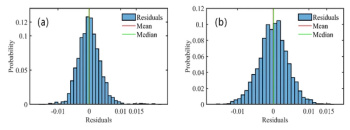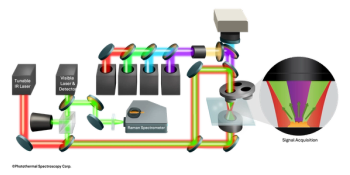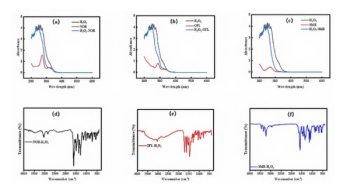
- January 2023
- Volume 38
- Issue 01
- Pages: 24–29
Smoothing of the Time-Resolved Spectral Matrix Obtained by a Streak Camera: Estimation of the Fluorescence Band Parameters
A new method based on singular value decomposition (SVD) applied to the denoising of the time-resolved spectral matrix (TRSM) made it possible to obtain kinetics data of the fluorescence band parameters of a 3-aminophthalimide spectrum in acetonitrile.
A new method based on singular value decomposition (SVD) was applied to the denoising of the time-resolved spectral matrix (TRSM), which was obtained by a streak camera. The least informative principal components (PCs) were filtered out using the Tikhonov regularization principle. A method for determining the quasi-optimal regularization parameter was suggested. The SVD method was compared with the moving average time direction (MATD) smoothing of the TRSM. Numerical simulations and experimental study of the 3-aminophthalimide (3AP) solution in acetonitrile showed that the SVD smoothing allowed for accurate measurement of signals in peak maximum. Fitting the polynomial modified Gaussian to the smoothed fluorescent bands decreased the measurement errors of the maximum peak position and its width. This method allowed us to obtain kinetics data of the fluorescence band parameters of the 3AP spectrum in an acetonitrile solution. Flexible selection of the quasi-optimal processing parameters and a better time resolution are the main advantages of the SVD method over MATD.
About The Authors
J. Dubrovkin is with the Multidisciplinary Department, Western Galilee College, in Acre, Israel. V.I. Tomin and A. Krzysztofowicz are with the Physics Department at Pomeranian University in Słupsk, Poland. Direct correspondence to:
Articles in this issue
almost 3 years ago
Infrared Spectroscopy of Polymers X: Polyacrylatesalmost 3 years ago
The 2023 Emerging Leader in Atomic Spectroscopy AwardNewsletter
Get essential updates on the latest spectroscopy technologies, regulatory standards, and best practices—subscribe today to Spectroscopy.




![Figure 3: Plots of lg[(F0-F)/F] vs. lg[Q] of ZNF191(243-368) by DNA.](https://cdn.sanity.io/images/0vv8moc6/spectroscopy/a1aa032a5c8b165ac1a84e997ece7c4311d5322d-620x432.png?w=350&fit=crop&auto=format)